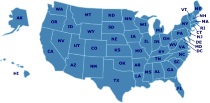Learning Styles & Teaching Strategies
Understanding learning styles will allow you and your children to get the most out of your homeschooling. By figuring out how your child learns best, you'll be able to more effectively choose curriculum and plan for a successful learning environment. With the discovering of your child's specific learning style, you can respond more effectively and reduce frustration in your homeschooling.
Understanding Your Child's Learning Style
Know Your Students: Identify Their Personal Learning Styles
The Seven Learning Styles
100 Top Picks For Homeschool Curriculum: Choosing The Right Curriculum And Approach For Your Child's Learning Style
Right-Brained Children in a Left-Brained World: Unlocking the Potential of Your ADD Child
Cognitive Styles and Learning Strategies: Understanding Style Differences in Learning and Behaviour
Raising Topsy-Turvy Kids: Successfully Parenting Your Visual-Spatial Child
Understanding how children learn best allows you to meet their needs and help them succeed. A visual-spatial learner remembers things in pictures and learns better with visual clues and strategies. This book addresses those needs and helps you figure out how to encourage this type of learner in your homeschool environment.
How to Homeschool: Determine Your Child’s Learning Style
One of the first steps you should take when embarking on homeschooling is determining your child's learning style. Most people tend towards one of the four main learning styles. This means that they are more successful in learning when the learning and teaching corresponds to this style. Few people are only one learning style, so exploring the different styles is helpful. This guide details four learning styles: kinesthetic, visual, auditory, and tactile.
7 Tips for Homeschooling Different Learning Styles
This explanation guide details the seven different learning styles: visual, auditory, kinesthetic, linguistic, logical, solitary, and social. People usually are a combination of more than one learning style. Implementing teaching and learning methods to respond to these styles can benefit homeschooling. These tips will help you integrate an understanding of learning styles into your homeschooling.
Learning Styles: Reaching Everyone God Gave You to Teach
In Their Own Way: Discovering and Encouraging Your Child's Multiple Intelligences
How to Determine Your Child's Learning Style
Discovering Your Child’s Learning Style
Everyone has their own preferred way of learning. Learning styles can be generally divided into three types: visual, auditory, and kinesthetic learning styles. Discovering your child's learning style will be of benefit to both your child and to you too. By understanding these learning styles, you can better choose curriculum and plan out a strategy that will work best for you and your child.
The Learning Style Quiz
How do I know what my child's learning style is? This quick quiz can help you figure it out. There are lots of combinations of different learning styles and usually children are not just one single style. Everyone learns in a variety of ways. Understanding this can help you re-evaluate and adjust to your child's particular learning style. This quiz focuses on the three main learning styles: auditory, visual, and kinesthetic.
Learning Styles: Reaching Everyone God Gave You to Teach
The Way They Learn
How to Determine Your Child's Learning Style
Children process information and learn in different ways. There are three primary ways in which people learn: visual, auditory, and kinesthetic. When you discover how your child learns, you can help shape their educational experience to prioritize this primary learning style, while also ensuring a well-rounded education.
In Their Own Way: Discovering and Encouraging Your Child's Multiple Intelligences
Quiz: What's Your Child's Learning Style?
Knowing and understanding your child's learning style is the key to homeschooling success. This short quiz will help you determine what ways of learning are best for your child.
How To Identify Children’s Learning Styles
An appreciation of your child's primary learning style will help you support them in learning at home. It is also important to understand your own learning style if that is different from your child's. First, identify your own learning style of one of the four primary types: visual learner, kinaesthetic learner, auditory learner, and logical learner.
Discover Your Children's Gifts
This comprehensive work on children's learning styles and creativity expression is a tremendous help to parents as they begin homeschooling. The authors discuss how God gifts children in different ways with different ways of learning and expression. This guide will help you identify your child's personality gifts and help them reach their full potential.
Discover Your Child's Learning Style : Children Learn in Unique Ways - Here's the Key to Every Child's Learning Success
Featured Resources
As an Amazon Associate, we earn from qualifying purchases. We get commissions for purchases made through links on this site.













